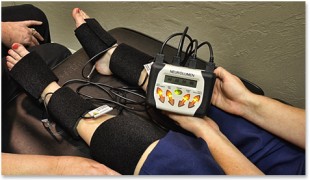- 2957
- 248
- 6
- 8
- 0
- Help Ukraine
About the solution
Born three months premature, Mackenzie Maher was diagnosed with severe spastic quadriplegia cerebral palsy and given a prognosis of a life impacted by severe disabilities. Never wanting to accept the dire prognosis of their daughter, Kevin Maher and his wife Rhonda became fully invested in doing all they could by providing Mackenzie with an intensive daily at-home therapy program.
When their daughter was only 4, The Mahers were told that her very poor balance would benefit by adding vestibular stimulation to her therapy program. In practicality, it was impossible for Mackenzie to perform any of the exercises on her own, so the parents had to provide the therapy for her. After giving it her all for a couple of weeks, the therapy was discontinued because administering it manually proved to be just too difficult.
Determined to find a practical way for providing safe vestibular therapy for his daughter, Kevin applied his 20 years of experience with robotics systems towards engineering a solution. He created a rotational chair in his garage made of a child's car seat, scraps of wood, and various hardware. Within weeks of using the rotational device, Mackenzie was making extraordinary and unexpected gains not only with balance, but also in her overall development. Encouraged by her gains, Kevin bootstrapped his way to producing the first automated GyroStim in 2007.
Nowadays, GyroStim is a computer-controlled, automated, multi-axis rotational chair. It provides therapeutic treatment for balance disorders resulting from injury, illness, and neurological or aging-related conditions. The treatment is uniquely capable of reducing or eliminating dizziness, imbalance, nausea, headache, fatigue, brain fog, memory loss, depression, anxiety, and other manifestations of balance disorders and vestibular dysfunction.
This story was adapted from: https://www.gyrostim.com/history and https://www.mbtmag.com/best-practices/news/22392881/father-invents-balan...
The images were taken from: https://www.mbtmag.com/best-practices/news/22392881/father-invents-balan... and we do not own any of them.
This solution shall not include mention to the use of drugs, chemicals or biologicals (including food); invasive devices; offensive, commercial or inherently dangerous content. This solution was not medically validated. Proceed with caution! If you have any doubts, please consult with a health professional.
DISCLAIMER: This story was written by someone who is not the author of the solution, therefore please be advised that, although it was written with the utmost respect for the innovation and the innovator, there can be some incorrect statements. If you find any errors please contact the patient Innovation team via info@patient-innovation.com
-
-
621
-
0
-
12199

Mother invents device to help relieve pain
CAREGIVING
Chronic Back Pain
Polyneuropathy
diabetes type 2
Arthritis
Treatment/Surgical device
Strategy/Tip
Difficulty walking or moving
Muscle cramps or spasms
Difficulty coordinating movements
Stiffness or rigidity (difficulty moving)
Muscle weakness
Muscle pain or stiffness
Joint redness or warmth
Numbness or tingling in the extremities
Swelling or inflammation
Difficulty getting up from the floor
Fatigue
Joint pain or swelling
Managing pain
Recovering from Traumatic Injuries
To improve Treatment/Therapy
Caregiving Support
Cardiology
Endocrinology
General and Family Medicine
Neurology
Orthopedics
Pediatrics
Physical Medicine and Rehabilitation
Rheumatology
United States
-
-
-
403
-
0
-
5442

Mother creates weighted cape to help her special needs daugther
CAREGIVING
Urban exploration
COMMUNICATION: Communicating, whether by speaking, listening, or other means
Post traumatic stress disorder (PTSD)
Anxiety
Body-Worn solutions (Clothing, accessories, shoes, sensors...)
Anxiety
Social withdrawal or isolation
Irritability or anger outbursts
Restlessness or feeling slowed down
Panic attacks
Racing thoughts
Feelings of guilt or worthlessness
Suicidal thoughts or behaviors
Obsessive thoughts or compulsive behaviors
Hallucinations (perceiving things that aren't there)
Sleep disturbances
Managing pain
Promoting self-management
Managing Neurological Disorders
Promoting inclusivity and social integration
Enhancing Mental Health
Improving Speech and Communication
To improve Treatment/Therapy
Preventing (Vaccination, Protection, Falls, Research/Mapping)
Raise awareness
Child and Adolescent Psychiatry
Neurology
Pediatrics
Physical Medicine and Rehabilitation
United States
-
-
-
532
-
0
-
7140

Veteran creates device to help him deal with post-traumatic stress disorder
SLEEP FUNCTION: Resting
Post traumatic stress disorder (PTSD)
Migraine
Depressive Disorders (Major Depression, Childhood Depression, Postpartum Depression)
Treatment/Surgical device
Strategy/Tip
Anxiety
Muscle cramps or spasms
Depressed Mood
Sleep disturbances
Headaches
Mood swings
Feelings of guilt or worthlessness
Depression or anxiety
Managing pain
Recovering from Traumatic Injuries
Enhancing Mental Health
To improve Treatment/Therapy
Neurology
Physical Medicine and Rehabilitation
Psychiatry
Public Health
United States
-
 en
en